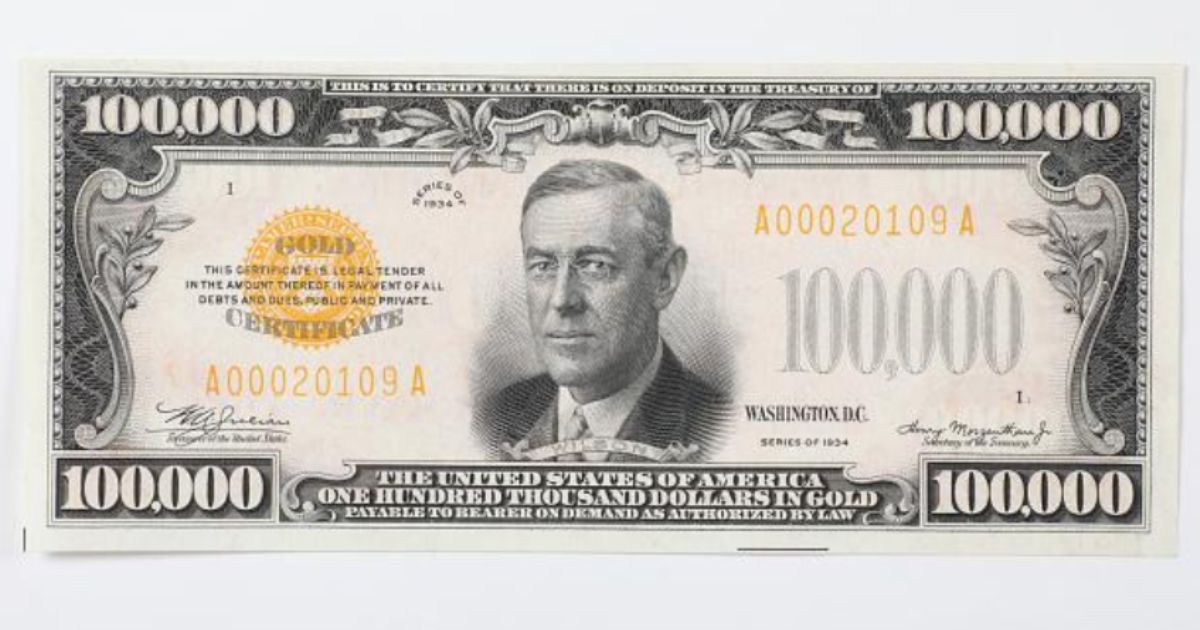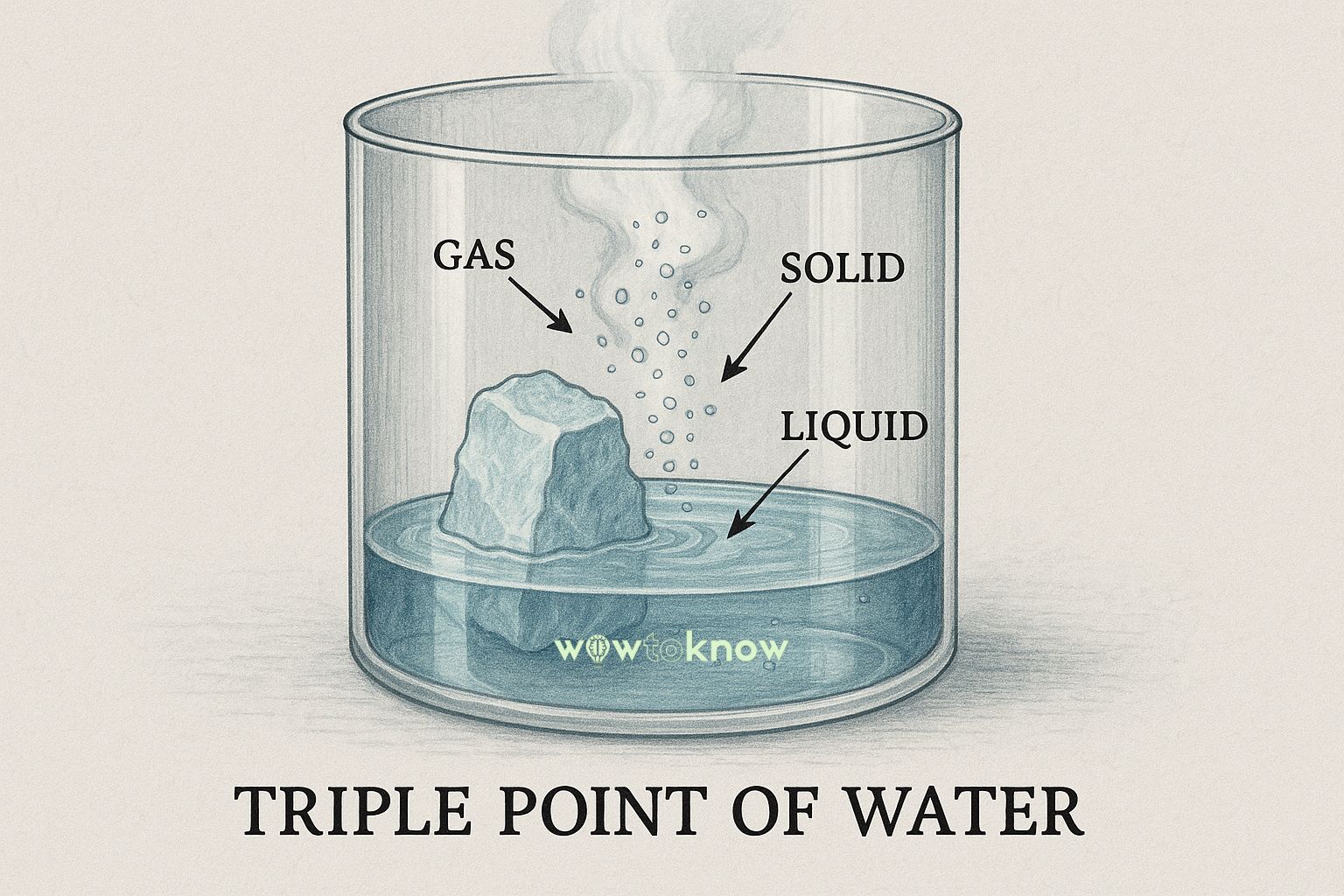The $100,000 bill featuring Woodrow Wilson is the highest denomination in the history of US currency. It was briefly used in the 1930s for transactions between Federal Reserve Banks but was never in public circulation.
Read on to learn more about this and other rare US dollar banknotes.
Design and Appearance
The $100,000 bill, also known as the 100,000 Gold Certificate, was issued in 1934 during the administration of President Franklin D. Roosevelt.
The front of the bill features a portrait of President Woodrow Wilson who served as the 28th President of the United States from 1913 to 1921.
The bill’s design is elegant, with intricate details and fine engravings, showcasing the craftsmanship of the Bureau of Engraving and Printing.
One of the special features of the 100,000 dollar bill is the orange color of its reverse side. This design was used on the back of the 100,000 dollar bill to distinguish it from other denominations and to make it readily recognizable as the highest denomination of U.S. currency ever issued.
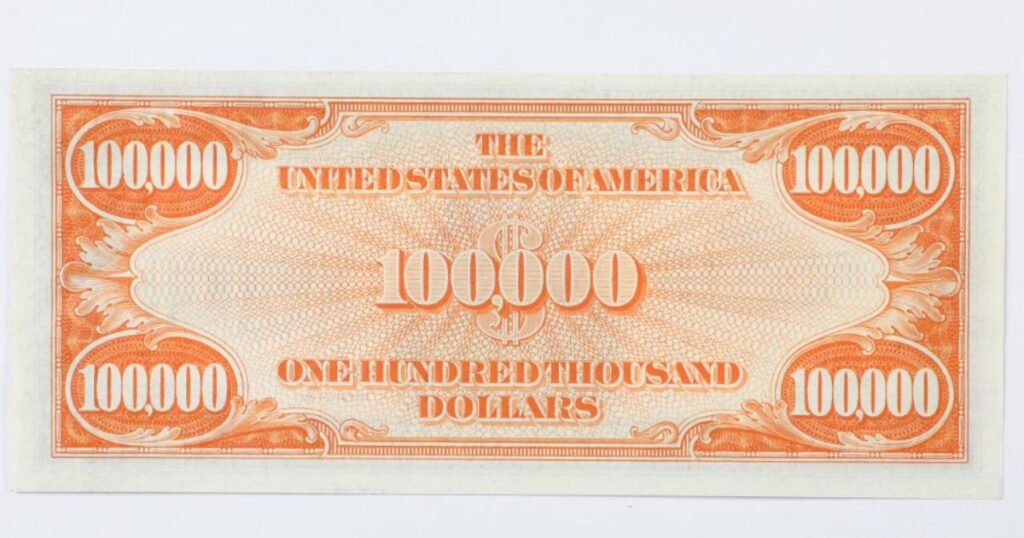
Purpose and Usage
The $100K bill was never intended for public circulation and was not available to the general public. Instead, it was primarily used for transactions between Federal Reserve Banks.
Its main purpose was to facilitate large transactions between the Federal Reserve Banks themselves, as well as for transactions involving the U.S. Treasury and other financial institutions.
The bill was essentially a form of interbank transfer instrument, making it more of a tool for facilitating financial operations among institutions rather than a widely accessible form of currency.
Limited Production and Rarity
The production of the 100K dollar bill was extremely limited. Only a very small number of these bills were ever printed, and they were printed in a single series – Series 1934.
It’s estimated that only a few hundred $100,000 bills were produced, making them exceptionally rare and highly sought after by collectors.
Collectibility and Value
Today, surviving examples of this rare bill are considered highly valuable collector’s items.
Due to its rarity and historical significance, the 100,000 dollar bill value can range from hundreds of thousands to millions of dollars, depending on its condition and provenance.
Like other collectibles, the condition of the note significantly affects the 100,000 dollar bill price. Bills in pristine, uncirculated condition command higher prices.
Currency grading services assess the condition of bills and assign grades, such as “Uncirculated” (highest grade) to “Good” (lowest grade). Higher-grade bills are more valuable.
Some collectors and museums are fortunate to possess $100,000 bills in their collections. The Smithsonian Institution’s National Museum of American History, for example, has a 100,000 banknote on display, offering visitors a glimpse into this rare piece of currency history.
Other Discontinued and Rare US Dollar Banknotes
The history of U.S. currency includes several other unusual and discontinued dollar bills. Here are a few notable examples:
$500 Bill
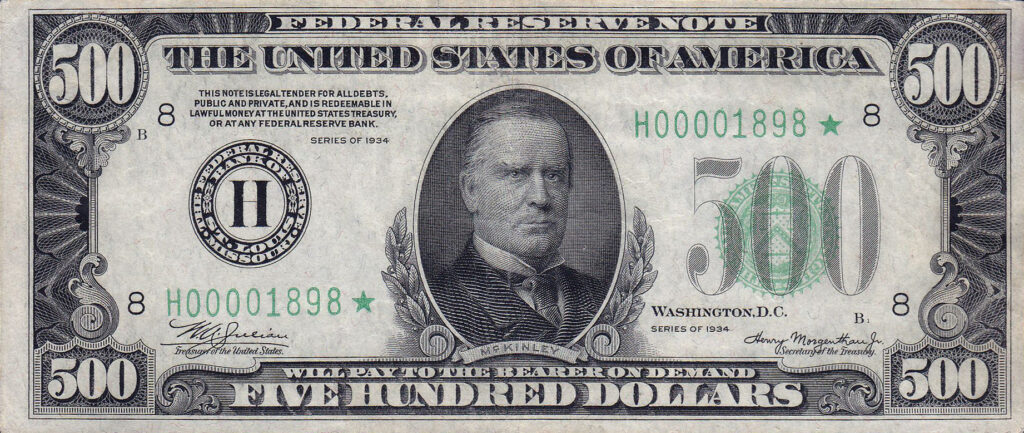
The $500 bill featured a portrait of President William McKinley on the front.
Like other high-denomination bills, the $500 bill was primarily used for transactions between banks and was not commonly circulated among the general public.
The last printing of the $500 bill occurred in 1945, and they were officially discontinued in 1969.
Despite no longer being in circulation, this banknote remains legal tender.
It wouldn’t be wise to pay for anything with it though, as its collector’s value is much higher than $500 today.
$1,000 Bill

The $1,000 bill, also known as the “Grand Watermelon” due to the resemblance of the zeros on the back to watermelon slices, featured a portrait of President Grover Cleveland.
These bills were primarily used for large financial transactions between banks and were not widely seen in circulation.
The $1,000 bill, along with other high-denomination bills, was discontinued in 1969.
$5,000 Bill
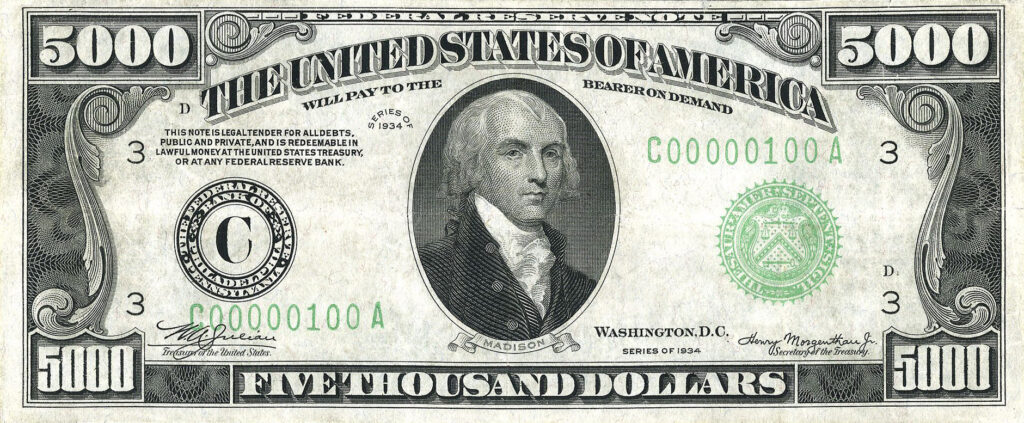
The $5,000 bill featured a portrait of President James Madison and depicted the painting General George Washington Resigning His Commission on the back.
As with other high-denomination bills, the $5,000 bill was used for interbank transactions and was not intended for public use.
Discontinued in 1969, the $5,000 bill is rare and collectible.
$10,000 Bill
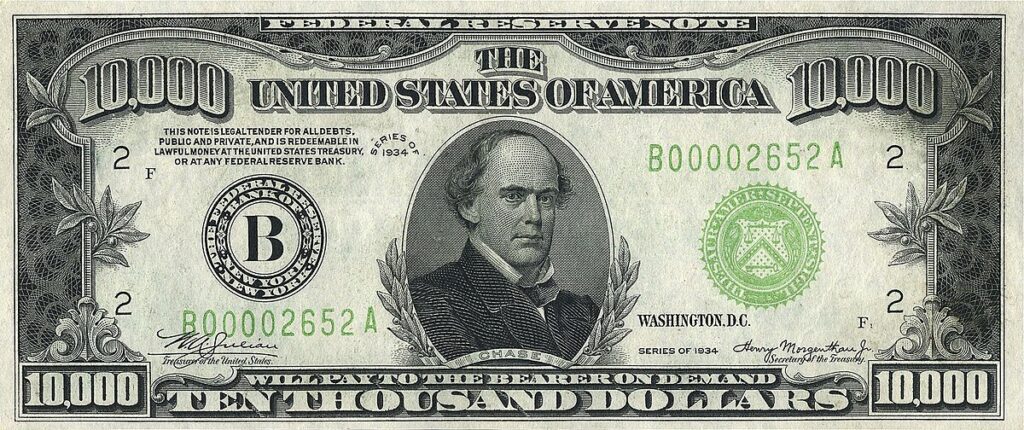
This banknote featured a portrait of Salmon P. Chase who served as Secretary of the Treasury during the Civil War. It was the highest denomination of U.S. currency ever publicly circulated.
These bills were primarily used for large financial transactions between banks and the U.S. Treasury.
Like other high-denomination bills, the $10,000 bill was discontinued in 1969.
$2 Bill
Despite being in circulation, $2 bills are less commonly seen, leading to misconceptions that they are rare.
Last printed in 2017, there are around 1.4 billion $2 notes in circulation.
The $2 bill features a portrait of Thomas Jefferson on the front and a depiction of the signing of the Declaration of Independence on the back.
FAQ
Does the US have a 100,000 dollar bill?
The United States did produce a $100,000 bill in the 1930s, but it was not commonly used for circulation. It was primarily used for transactions between Federal Reserve Banks and was never intended for general public use.
Who is on the $100,000 dollar bill?
This banknote features a portrait of Woodrow Wilson, the 28th President of the United States, who served from 1913 to 1921.
Can you own a 100,000 dollar bill?
While it’s possible to own such a banknote, they are extremely rare and valuable collector’s items. They were last printed in 1934, and only a few are known to exist today. Most of these bills are held by museums, institutions, and private collectors.
Has the Wilson 100,000 dollar bill ever been displayed?
The Wilson $100,000 bill has been displayed in museums and exhibitions, given its historical and numismatic significance.
Is there a market for selling a 100,000 dollar bill?
There is a collector’s market for selling and buying rare currency, including this particular bill. The value of such a note can vary widely based on factors such as its condition, rarity, historical significance, and current demand among collectors.
How much is a $100,000 bill worth?
A $100,000 bill for sale in good condition could potentially sell for over a million dollars.

